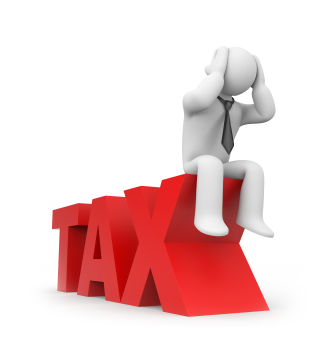A Canadian Bookkeeping Compliance Resource
Do You Want Audit Ready Books?
Solve the Puzzle of Your Business Compliance Requirements
Publisher: L. Kenway BComm CPB Retired | Modified April 2024
This website is a free Canadian bookkeeping compliance resource for micro to small business owners and work from home bookkeepers who want to have audit ready books. Let me take you on a journey to solve the puzzle of good bookkeeping compliance practices in Canada ... because KNOWLEDGE puts money in your pocket and keeps you off the Canada Revenue Agency's (CRA) radar.
- What to do if you can't pay your taxes?
- Did you get more tax slips after you filed your tax return?
- Want to pay Revenue Canada online?
- What are the steps to declaring and paying a Canadian dividend?
- What is this year's CRA prescribed tax free auto allowance rate?
- What is the deadline for issuing T4A and T5018 slips for contractors?
- What is the Special 90% Rule for GST HST collection?
- Want information on loans to shareholders, employees or your spouse?
- Did you make one of these self-employed common tax mistakes?

About This Site
I published Bookkeeping-Essentials.com in 2009. I retired from bookkeeping in 2020 and now find I enjoy being retired so much I have not been spending the effort to maintain the over 700+ pages on the website.
As I'm not completely ready to give up the site, I opted to transition all the Canadian compliance bookkeeping and tax information to its own Canadian site ... Bookkeeping-Essentials.ca. The remaining information left on Bookkeeping-Essentials.com will become solely about learning good bookkeeping practices.
Initially, some links will take you back to Bookkeeping-Essentials.com as I update and transition the information. Please don't freak out when that happens.
This site will provide general and time sensitive compliance information that Canadian small business owners need to run their business effectively; and assist their often isolated work from home bookkeepers.
Each article on the site will now include:
- a publication date, and if applicable;
- a revision date - content has been reorganized, expanded, and updated to improve the quality or accuracy of the article;
- an update date - material is substantially the same but has been modified to make it current such as links, dates, rates, or correct errors or reflect changes to compliance rules; and
- an editing date - minor edits on formatting, grammar, or spelling errors.
Watch for good compliance practice tips and pointers throughout the site. I hope you find my new site practical in nature as well as being a useful Canadian bookkeeping compliance resource.
Just Breathe, Laura
P.S. A new look and feel is coming to this site soon.
Mediocrity is a choice;
it’s not always made consciously, but it is still a choice.
-- Gary Ryan Blair --
Canadian Bookkeeping Compliance Resources
Where do you want to go next?
Jump To >> Canadian Bookkeeping Tax Rates
Good Bookkeeping Habits
Small Daily Habits Can Move Mountains
Even if you "don't do taxes", as a small business owner, you or your bookkeeper need to understand the basics to prepare a CRA compliant set of books. Think GST HST PST, payroll taxes, excise tax, income tax installments ... these are all forms of tax ... so surprise, you do "do tax"!
As a small business owner in Canada or as a bookkeeper working from home, YOU know small business tax planning doesn't happen when you file (or not!) your mandatory tax compliance returns ...
Tax planning happens EVERY day throughout the year ...
Good compliance practices don't happen on any one particular day. They aren't an event; they are a HABIT.
By taking the time to learn and know the rules ...
YOU can do all the little things needed to LEGALLY reduce your net taxable income.
SMALL daily habits CAN move mountains.
SMALL BUSINESS COMPLIANCE RESPONSIBILITIES
Aiming For Consistency Not Perfection
Owning and operating a business in Canada means you have some legal responsibilities. Canada Revenue Agency (CRA) requires regular reporting of Canadian sales tax, payroll taxes, and income taxes. Each province and territory has their own tax related requirements as well. These regulations are often referred to as government compliance requirements.
 Isn't it the perfect time to get all your ducks in a row?
Isn't it the perfect time to get all your ducks in a row?Tax compliance returns and payments should be filed on time. Failure to report and remit by due dates leads to costly penalties and interest charges. This site provides the Canadian bookkeeping compliance information you need to know to put more money in your pocket and avoid these charges (i.e., stop flushing your hard earned money down the toilet!).
Isn't it the perfect time to get all your ducks in a row? If not now, when? At first it seems overwhelming. But once you go through the process a few times, you will be able to relax and find it just another part of your paperwork routine in operating your business.


Good Compliance Habit
WHAT TO DO WHEN YOU CAN'T PAY YOUR TAXES
 What to do when you can't pay your taxes.
What to do when you can't pay your taxes.Even if you can't pay the taxes owing, strive for tax compliance by always filing compliance returns by their due dates to avoid pricey penalty charges. Interest charges on the balance owing will still apply.
Late filing or failure to file penalties for tax returns are 5% of the tax owing plus 1% for each month your return is late to a maximum of 12 months.
If you were charged a late-filing penalty on three prior year returns, your late-filing penalty may be 10% of your current year balance owing, plus 2% for each full month your return is late to a maximum of 20 months.
Interest charges on the balance owing will still apply and are set every three months.
- Did you miss ANY of your prior year filing deadlines? It is much better to file NOW than wait for a CRA demand letter.
- Are you more than one year behind in filing? Learn about Voluntary Disclosure.
- Are you behind on your tax compliance responsibilities because life events were out of your control... things like a divorce, death, illness? You may qualify for taxpayer relief from interest on unpaid taxes.
- Do you file your GST return annually? Check out this GST tip.
If possible, pay what you can when filing even if it isn't the full balance. That's how you stay on track to having Canadian bookkeeping compliance for your business. It's how you stay in control of your compliance responsibilities.
This year, decide you are going to operate a Canadian bookkeeping compliant business. By making bookkeeping compliance part of your identity, it will just become a habit and who you are as a business owner. Do what needs to be done to get all your ducks in a row. Give yourself the gift of less stress in your business life.
Some small business owners choose to close for a day or half a day each week to take care of their back office duties and compliance reporting obligations ... just like small businesses used to do in the "old" days. Does anyone else remember when small businesses were closed on Mondays and Wednesday afternoons?

It's Easier to File and Pay Online Than Ever Before
Small business owners often catch up on their paperwork at night after a long day. Filing and paying online makes an efficient use of your time. Modern technology advances means more and more small businesses can transition easily and affordably to a paperless system. What's holding you back?
Be Tax Compliant This Year
Did you make a mistake on a tax return you filed with CRA ... or get some more slips after you sent in your tax return?
Find out why you should amend it ... and what form to use.
CRA initially expanded their system in 2013 to begin the move to a paperless system. Each year they make improvements which helps you run your business more efficiently. You can sign up to receive your notices online ... it's a timesaver! They also accept source documents requests from audits online. Features like this are why the fax machines are no longer a necessity in most offices these days.
Canadian bookkeeping compliance was made a little easier in October of 2009 when the CRA introduced the My Payment service. This service allows you to pay your business (and individual) taxes online instantly from your bank account through a secure link with approved Canadian financial institutions. No more mailing in a cheque or going to the bank. It's important to note that no banking information is shared with CRA when you use My Payment services unless you choose the payment option for CRA to take a preauthorized payment from your bank account. Just follow the instructions and make your selections as prompted.
There have been many revisions to the service since 2009 ... a more recent one was integrating the filing of a compliance return with setting up a post-dated pre-authorized payment at the same time. If you use My Payment to pay after hours, or on the weekend or a holiday, the online payment will be credited the following business day.
2016 introduced the ability to pay with Visa Debit cards (ATB, CIBC, BNS, RBC, TD) and later MasterCard Debit cards (BMO and Servus CU). I'm NOT a fan of this payment method if you have more than one bank account as it often doesn't let you chose the account to pay from. Interac was the better option but now only TD business clients plus many credit unions offer the Interac option now.
RBC discontinued Interac payment as of May 2023. However, they introduced a virtual debit card as a replacement to the Interac payment option. The virtual debit card gives you the option to select which account you want to make a payment from.
My favourite My Payment option was introduced in May 2022. As mentioned above, CRA now offers the option to make a post-dated preauthorized payment at the time of filing. You can set the date you want the payment taken directly from your bank account with 5 business days as the default option. This means you have to file at least a week in advance of any deadline to avoid late payment charges.
The My Payment service allows you to pay:
- GST/HST
- payroll deductions
- corporate income tax
- excise duties and taxes
- individual income tax ... and more.
Your first step is to register for My Payment. Once you follow CRA's instructions for that process, sign into My Payment. Sounds like it should be an easy thing to do, doesn't it? It's not in a prominent place anymore. It's a bit tricky to find the My Payment option on CRA's website because the government site is so large. How you get to it ... Canada.ca/en/revenue-agency.html> Payments to the CRA ... then keep clicking until you reach the correct option for you.
Your other option is to just google CRA My Payment ... however, these days you have to cognizant you are not clicking on a fraudulent or copycat site. Make it a habit to look at the top line of your browser to check the URL address. It should have a lock to indicate it is an https site ... and the URL must end with canada.ca. There should be nothing else between canada and .ca.
Since May 2022, a third option is to sign into your My Account or My Business Account and file your return from there. Once you submit it, it takes you to My Payment. This makes it seamless to file and pay.
CRA's service gives you an alternative to paying the banks' administration fee that banks charge for their service to pay CRA online. The banks' payment systems allow you to make post dated filing and payment transactions which is valuable if your payments are significant or one of your employees is doing the filing and setting up the subsequent payment arrangements.
Vehicle Expense Reimbursement Options
CRA has three distinct sets of rules for vehicles used for business purposes. Choose the one that fits your circumstances.
Canadian Bookkeeping Tax Rates
QUICK LINKS
- Prescribed quarterly interest rates - used for shareholder loans, spousal and employee loans
- CCPC Tax Rates and Limits | Small Business Deduction
- Common CCA Rates - used to classify your capital assets and depreciate them using a declining balance method
Payroll Tax Rates
- Employment Insurance Premiums - used for employee source deductions
- Canada Pension Plan Contributions - used for employee source deductions
Sales Tax Rates
- PST QST GST HST Rates - includes territories
- BC PST non-regular rates - varies between 7% and 12%
- Simplified Rates - used as an alternative method of claiming input tax credits
- Quick Method Rates - used as an alternative method of claiming input tax credits
- Out of Province Customer Rates - how to determine the rate to charge
Canadian Travel and Vehicle Mileage Rates
- Per Kilometre Tax-Free Automobile Allowance
- Self Employed - must used detailed method to claim expenses
- Simplified Non-Business Travel Rates - used for medical and moving expenses not business expenses
- MORE >> Canadian Travel and Vehicle Mileage Rates

Start a Habit With This Canadian Bookkeeping Compliance Resource
My hope is you BUILD THE HABIT of checking in here regularly while you have a coffee, a cup of tea or in keeping with the times, a smoothie or water.
Take the time to reduce your stress by learning the Canadian bookkeeping compliance rules that apply to your business. You'll be happy you did once those refund cheques come rolling in or CRA notices and late filing penalty charges disappear.
Most of all, remember to JUST BREATHE! Deep breath in for the count of four. Hold your breath for four counts. Exhale in four counts. Pause for four counts. Repeat five times. You've got this! You just need to get all your ducks in a row.
I'll leave you with a work life balance suggestion to give you the energy boost you need to improve your Canadian bookkeeping compliance this year ...


Dr. Will's Breakfast Smoothie | A Meal In A Glass
If you are trying to have a better work life balance and promised yourself you were going to eat healthier this year; try Dr. Will Bulsiewicz's (a gastroenterologist and author of Fiber Fueled) fast and easy breakfast smoothie.
Just throw these four ingredients in the blender and blend until smooth.
- blueberries (fresh or frozen) - [1/2 cup - prebiotic fibre]
- bananas (fresh or frozen) - [1/2 banana - prebiotic fibre]
- soy milk - [1 cup - prevents inflammation to improves bone health]
- broccoli sprouts - [handful or 2 - reduces inflammation]
To bring it to the next level, Dr. Will says you can top it off with some ground flaxseed (for the fiber) and walnuts (for the healthy fats). He encourages you to customize the smoothie to your taste and nutritional goals.
My comments are in [square brackets] as Dr. Will didn't give amounts.








